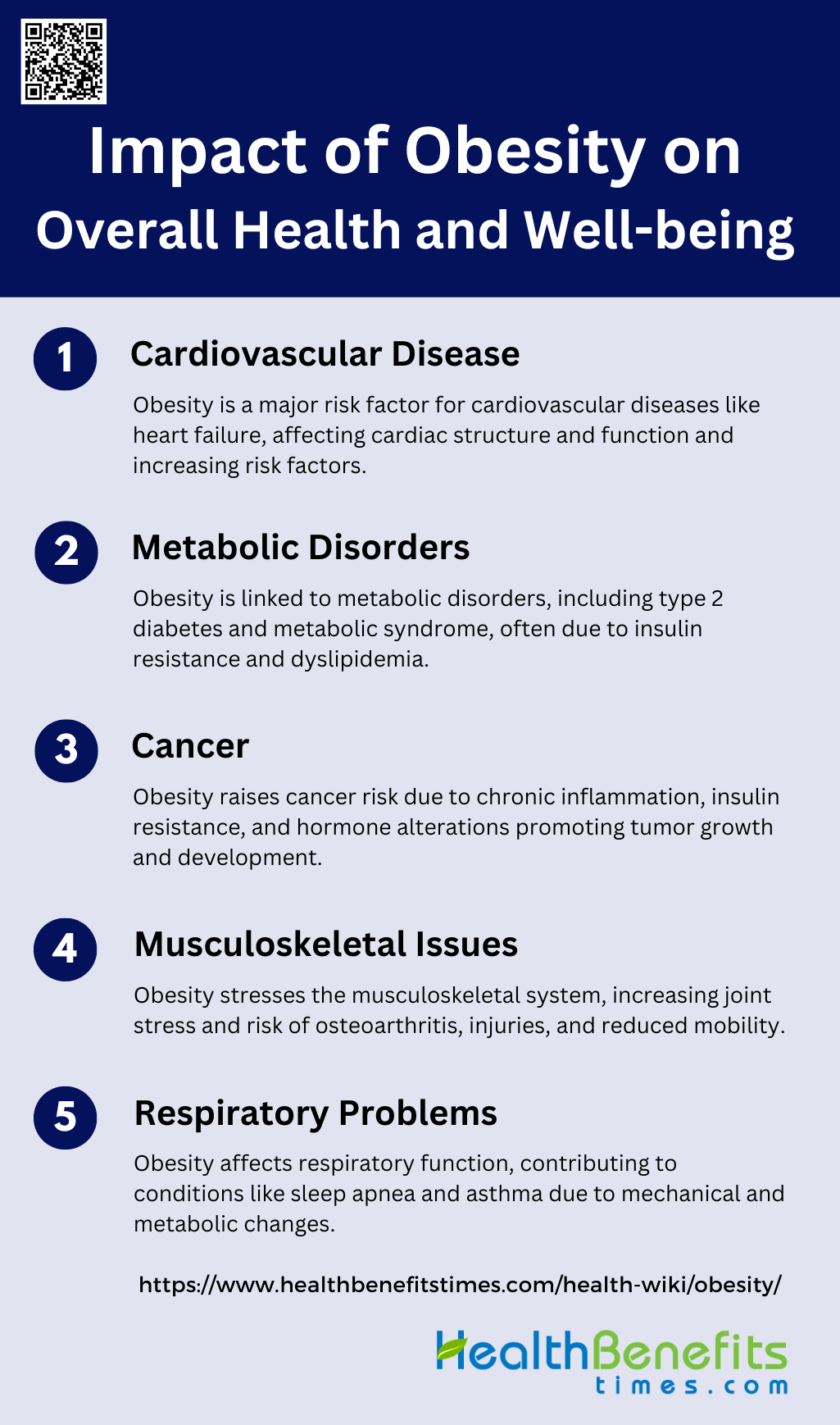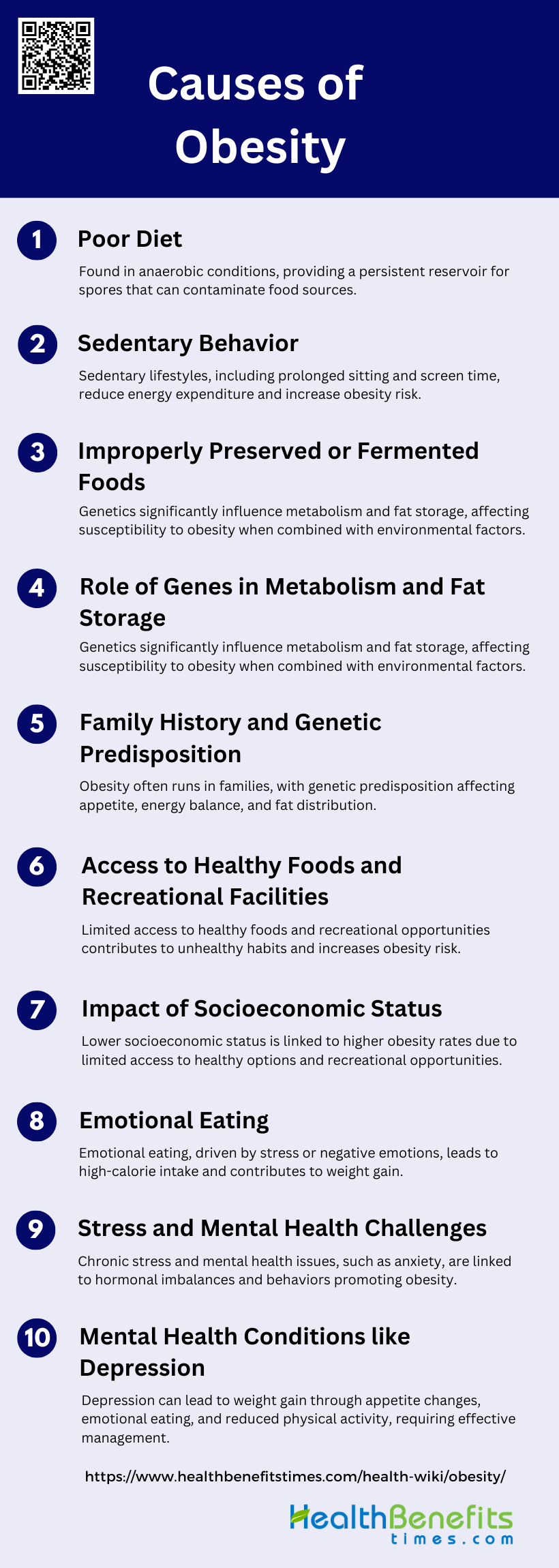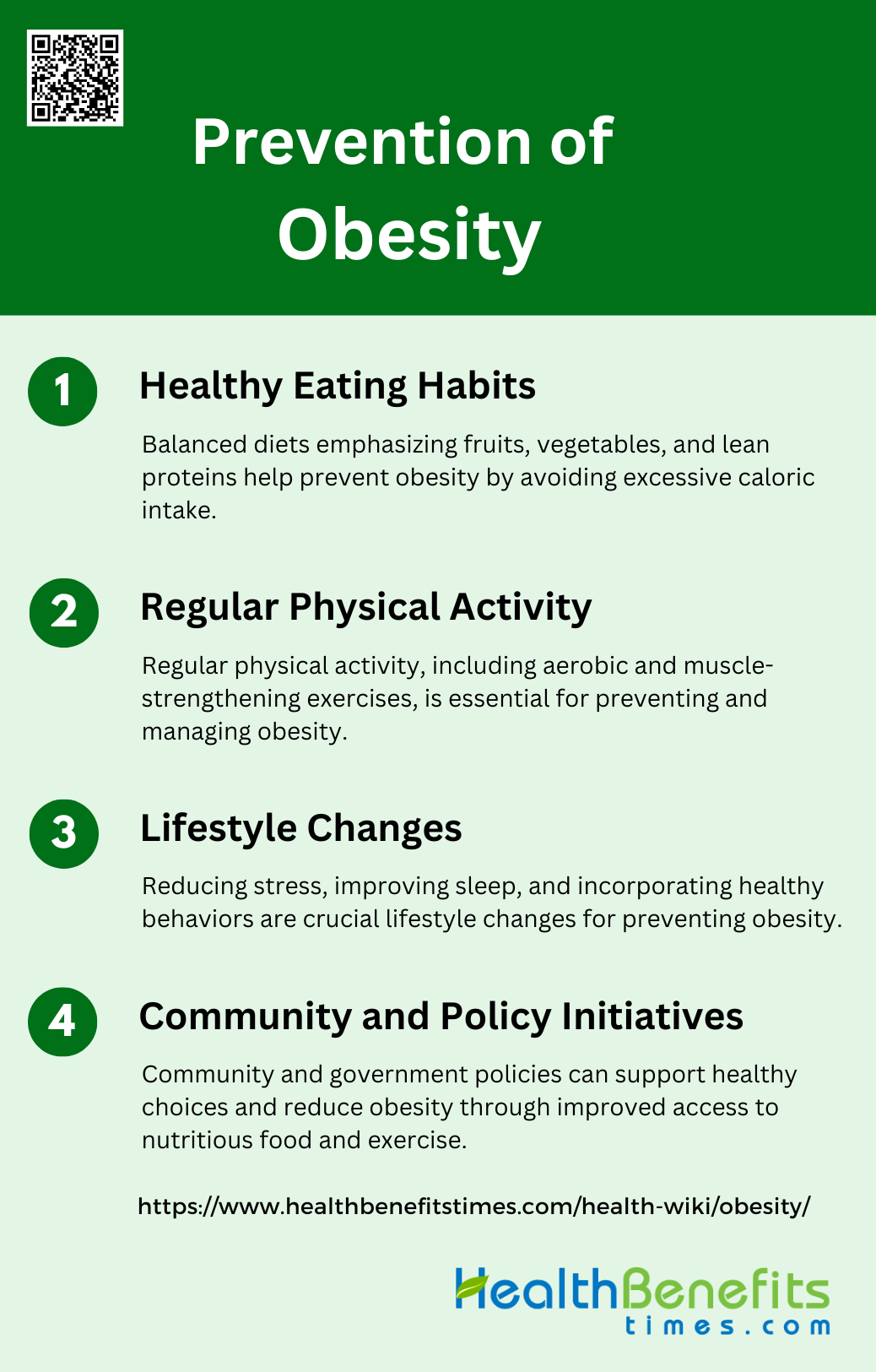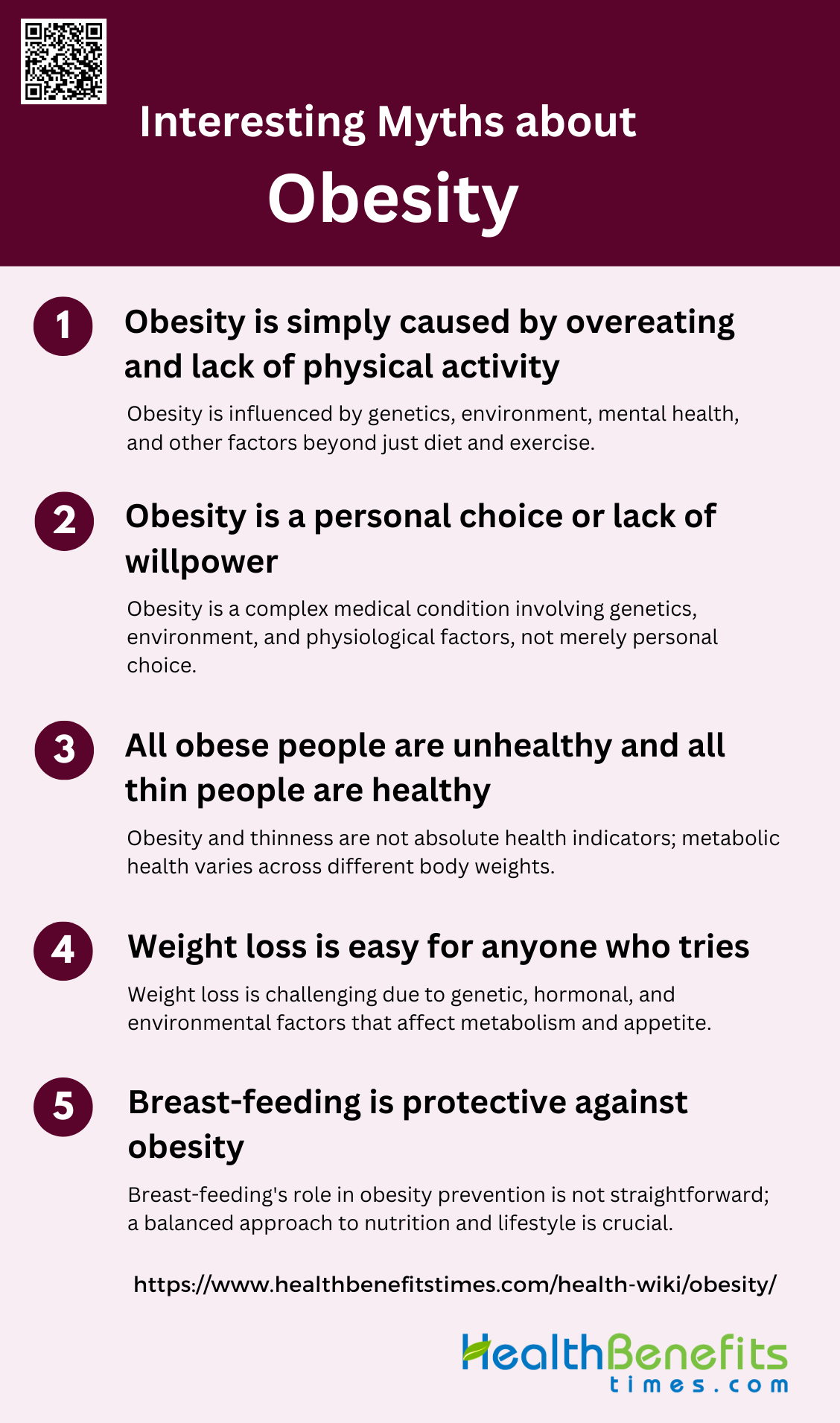Obesity is a complex health condition characterized by an excessive accumulation of body fat, which poses significant risks to an individual’s health. It is commonly measured using the Body Mass Index (BMI), where a BMI of 30 or higher is typically classified as obese. This condition is associated with an increased risk of various health issues, including type 2 diabetes, cardiovascular diseases, and certain types of cancer. The World Health Organization and other health bodies have established different BMI standards across regions to account for variations in body composition among different populations. Obesity can also coexist with other conditions, such as sarcopenia, leading to sarcopenic obesity, which involves both excess fat and reduced muscle mass, further complicating health outcomes. Addressing obesity often requires a multifaceted approach, including lifestyle changes, medical interventions, and sometimes surgical procedures.
Different levels of obesity
Obesity is classified into different levels based on Body Mass Index (BMI), each with varying degrees of health risks and management strategies. Understanding these levels is crucial for effective treatment and prevention. Below are the different levels of obesity:
1. Mild Obesity
Mild obesity, often classified as a body mass index (BMI) of 30 to 34.9, is a growing concern in many populations. This level of obesity is associated with an increased risk of various health conditions, including hypertension, type 2 diabetes, and cardiovascular diseases, although the risks are generally lower compared to more severe forms of obesity. The prevalence of mild obesity has been rising steadily over the past few decades, driven by factors such as sedentary lifestyles and poor dietary habits. Efforts to address mild obesity typically focus on lifestyle modifications, including increased physical activity and dietary changes, which can significantly reduce the associated health risks.
2. Moderate Obesity
Moderate obesity, defined as a BMI of 35 to 39.9, presents more significant health risks compared to mild obesity. Individuals with moderate obesity are at a higher risk for developing severe health complications such as type 2 diabetes, cardiovascular diseases, and metabolic syndrome. The prevalence of moderate obesity has been increasing, with significant disparities observed across different demographic groups, including higher rates among non-Hispanic black adults and low-income populations. Addressing moderate obesity often requires a combination of lifestyle interventions and medical treatments, including pharmacotherapy and, in some cases, bariatric surgery, to manage the associated health risks effectively.
3. Severe Obesity
Severe obesity, characterized by a BMI of 40 or higher, is associated with the most serious health consequences among the different levels of obesity. This category includes conditions such as morbid obesity (BMI > 40) and super-obesity (BMI > 50), which are linked to a significantly higher prevalence of type 2 diabetes, cardiovascular diseases, and other metabolic disorders. The prevalence of severe obesity is rising rapidly, with projections indicating that nearly 1 in 4 adults in the U.S. will have severe obesity by 2030. Severe obesity often requires comprehensive management strategies, including intensive lifestyle interventions, pharmacotherapy, and bariatric surgery, to mitigate the severe health risks and improve quality of life.
How obesity is measured
Body Mass Index (BMI)
Body Mass Index (BMI) is a widely used anthropometric tool to measure obesity among adults. It is calculated by dividing a person’s weight in kilograms by the square of their height in meters (kg/m²). BMI is simple, inexpensive, and non-intrusive, making it a popular choice for screening weight categories across various populations. Despite its widespread use, BMI has several limitations. It does not differentiate between muscle and fat mass, leading to potential misclassification, especially in individuals with high muscle mass or older adults with decreased muscle mass. Additionally, BMI’s accuracy in predicting body fat percentage is lower in individuals with a BMI below 30 kg/m², often resulting in misclassification of obesity. Therefore, while BMI is useful for large-scale epidemiological studies and initial screenings, it may not always accurately reflect an individual’s body fat content or health risks associated with obesity.
Other Measurement Methods
Beyond BMI, several other methods are used to measure and classify obesity, each with its own advantages and limitations. Direct measurement techniques such as dual-energy X-ray absorptiometry (DEXA) and bioelectrical impedance analysis (BIA) provide more accurate assessments of body fat percentage and distribution. These methods are particularly useful in populations where BMI may be less reliable, such as older adults or athletes. Waist circumference and waist-hip ratio are also commonly used to assess abdominal obesity, which is a significant risk factor for metabolic diseases. However, these methods can vary in accuracy depending on the population and the specific cut-off values used. Despite the higher accuracy of these methods, they are often more expensive, time-consuming, and require specialized equipment, limiting their use in large-scale studies or routine clinical practice. Therefore, while alternative methods provide valuable insights into body composition, their practical application is often balanced against the simplicity and accessibility of BMI.
Impact of obesity on overall health and well-being
Obesity significantly affects various aspects of health and well-being, leading to a range of physical, mental, and social challenges. Understanding these impacts is essential for effective prevention and management. Below are the key impacts of obesity on overall health and well-being:
1. Cardiovascular Disease
Obesity is a significant independent risk factor for cardiovascular disease (CVD), contributing to conditions such as coronary heart disease, heart failure, and sudden cardiac death. The accumulation of excess adipose tissue leads to various alterations in cardiac structure and function, even in the absence of other comorbidities. Obesity exacerbates known risk factors like dyslipidemia, hypertension, glucose intolerance, and inflammatory markers, which collectively increase the risk of CVD. Additionally, abdominal obesity, as indicated by waist circumference, is a particularly strong predictor of cardiovascular risk.
2. Metabolic Disorders
Obesity is closely linked to metabolic disorders, most notably type 2 diabetes and metabolic syndrome. The condition is characterized by insulin resistance, dyslipidemia, and changes in metabolic homeostasis. These metabolic alterations often progress to type 2 diabetes unless significant interventions are made. The concept of metabolically healthy obesity (MHO) has emerged, describing individuals with obesity who do not exhibit typical metabolic abnormalities. However, even MHO individuals have a higher risk of metabolic disorders compared to healthy lean individuals, and the MHO phenotype is often transient.
3. Cancer
Obesity is associated with an increased risk of several types of cancer, including breast, colorectal, and endometrial cancers. The mechanisms linking obesity to cancer involve chronic inflammation, insulin resistance, and alterations in hormone levels, which can promote tumor growth. Excess adipose tissue produces adipokines and cytokines that create a pro-inflammatory environment conducive to cancer development. Additionally, obesity-related metabolic changes, such as hyperinsulinemia and increased levels of insulin-like growth factors, further contribute to cancer risk.
4. Musculoskeletal Issues
Obesity significantly impacts the musculoskeletal system, leading to conditions such as osteoarthritis and reduced mobility. The excess weight places additional stress on joints, particularly the knees and hips, accelerating the wear and tear of cartilage. This mechanical stress, combined with obesity-induced inflammation, exacerbates joint degeneration and pain. Furthermore, obesity is associated with a higher risk of musculoskeletal injuries and disabilities, which can severely impair quality of life and physical function.
5. Respiratory Problems
Obesity adversely affects respiratory function, contributing to conditions such as obstructive sleep apnea, asthma, and chronic obstructive pulmonary disease (COPD). The mechanical effects of truncal obesity reduce lung volumes and compliance, while the metabolic effects of adipose tissue promote inflammation and respiratory dysfunction. There is an inverse relationship between body mass index (BMI) and pulmonary function, with increased body weight leading to worsening respiratory outcomes. Effective weight management is crucial for improving respiratory health in obese individuals.
Types of Obesity
Obesity can be categorized into different types based on various factors such as distribution of body fat, underlying causes, and associated health risks. Recognizing these types helps in tailoring specific treatment and prevention strategies. Below are the main types of obesity:
1. Central (Abdominal) Obesity
Central obesity, also known as abdominal obesity, is characterized by the accumulation of fat around the abdomen. This type of obesity is particularly concerning due to its strong association with various metabolic disorders. Individuals with central obesity are at a higher risk of developing conditions such as hypertension, elevated plasma insulin concentrations, insulin resistance, hyperglycemia, and hyperlipidemia, collectively known as metabolic syndrome. The intra-abdominal visceral fat deposition is a significant contributor to these health risks, necessitating a holistic approach to management. Effective identification and measurement of central obesity are crucial for early intervention and prevention of related health complications.
2. Peripheral Obesity
Peripheral obesity refers to the accumulation of fat around the hips and thighs. Unlike central obesity, peripheral obesity is generally considered to pose a lower risk for metabolic diseases. However, it is not without its health concerns. Fat accumulation in these areas can still contribute to overall obesity-related health issues, including cardiovascular diseases and joint problems due to the increased load on the lower body. While peripheral obesity may not be as strongly linked to metabolic syndrome as central obesity, it still requires attention and management to prevent long-term health consequences.
3. Childhood Obesity
Childhood obesity is a growing concern worldwide, characterized by an excessive accumulation of body fat in children. The causes of childhood obesity are multifactorial, including genetic predisposition, poor dietary habits, lack of physical activity, and environmental factors. The long-term effects of childhood obesity are profound, as it significantly increases the risk of developing type 2 diabetes, cardiovascular diseases, and other metabolic disorders at a young age. Early onset of these conditions necessitates active management and prioritization in research to mitigate the health and economic burdens associated with childhood obesity.
Causes of Obesity
Obesity is a complex health issue resulting from a combination of causes and contributing factors. Understanding these causes is crucial for developing effective prevention and treatment strategies. Below are some of the primary factors contributing to obesity:
1. Poor Diet
Poor dietary habits, including the consumption of high-calorie, nutrient-poor foods, are a significant contributor to obesity. The global shift towards unhealthy dietary patterns, characterized by increased intake of processed foods high in fats, sugars, and salt, has been linked to the rising prevalence of obesity. These dietary changes, combined with a sedentary lifestyle, create an energy imbalance that promotes weight gain.
2. Lack of Physical Activity
A sedentary lifestyle, marked by insufficient physical activity, is a major factor in the development of obesity. Modern society’s reduced physical demands, coupled with increased sedentary behaviors such as prolonged sitting and screen time, contribute to energy imbalance and weight gain. Studies indicate that physical inactivity is strongly associated with higher rates of obesity, emphasizing the need for regular exercise to maintain a healthy weight.
3. Sedentary Behavior
Sedentary behavior, including activities such as watching television and using computers, significantly contributes to obesity. These behaviors reduce overall energy expenditure and are often associated with increased caloric intake, further exacerbating weight gain. The modern environment, which promotes sedentary lifestyles, plays a crucial role in the obesity epidemic.
4. Role of Genes in Metabolism and Fat Storage
Genetic factors play a crucial role in metabolism and fat storage, influencing an individual’s susceptibility to obesity. Variations in genes related to appetite regulation, energy expenditure, and fat storage can predispose individuals to weight gain. While genetic predisposition alone does not determine obesity, it interacts with environmental factors to influence body weight.
5. Family History and Genetic Predisposition
Family history and genetic predisposition are significant contributors to obesity. Studies show that obesity tends to run in families, indicating a hereditary component. Genetic predisposition can affect appetite control, energy balance, and fat distribution, making some individuals more prone to obesity. However, lifestyle and environmental factors also play a critical role in the manifestation of obesity in genetically predisposed individuals.
6. Access to Healthy Foods and Recreational Facilities
Limited access to healthy foods and recreational facilities is a significant factor in the obesity epidemic. Socioeconomic disparities often result in environments where healthy food options are scarce, and opportunities for physical activity are limited. This lack of access contributes to poor dietary habits and sedentary lifestyles, increasing the risk of obesity.
7. Impact of Socioeconomic Status
Socioeconomic status significantly impacts obesity rates, with lower socioeconomic groups often experiencing higher obesity prevalence. Factors such as limited access to healthy foods, lack of recreational facilities, and higher levels of stress contribute to this disparity. Socioeconomic challenges can create environments that promote unhealthy behaviors, leading to weight gain and obesity.
8. Emotional Eating
Emotional eating, where individuals consume food in response to stress, boredom, or negative emotions, is a common cause of obesity. This behavior often leads to the consumption of high-calorie, comfort foods, contributing to weight gain. Emotional eating can be a coping mechanism for underlying psychological issues, making it a significant factor in the development of obesity.
9. Stress and Mental Health Challenges
Stress and mental health challenges, such as anxiety and depression, are closely linked to obesity. Chronic stress can lead to hormonal imbalances that promote fat storage, while mental health issues can result in emotional eating and reduced physical activity. Addressing stress and mental health is crucial in managing and preventing obesity.
10. Mental Health Conditions like Depression
Mental health conditions, particularly depression, are associated with an increased risk of obesity. Depression can lead to changes in appetite, reduced motivation for physical activity, and emotional eating, all of which contribute to weight gain. Effective management of mental health conditions is essential in addressing obesity.
Prevention of Obesity
Preventing obesity involves a multifaceted approach that includes lifestyle changes, dietary adjustments, and behavioral modifications. Below are some key strategies to help prevent obesity:
1. Healthy Eating Habits
A balanced diet is crucial for preventing obesity, as it ensures the intake of essential nutrients while avoiding excessive calories. Emphasizing the consumption of fruits, vegetables, whole grains, and lean proteins can help maintain a healthy weight. Reducing the intake of sugar-sweetened beverages and energy-dense, nutrient-poor foods is also important. Meal planning tips include preparing meals in advance, incorporating a variety of food groups, and controlling portion sizes. Encouraging family meals and avoiding fast food can further support healthy eating habits.
2. Regular Physical Activity
Regular physical activity is a key component in preventing obesity. Recommended exercise routines include at least 150 minutes of moderate-intensity aerobic activity or 75 minutes of vigorous-intensity activity per week, along with muscle-strengthening activities on two or more days per week5. Incorporating physical activity into daily life can be achieved by taking the stairs instead of the elevator, walking or biking to work, and engaging in active hobbies such as gardening or dancing. Schools and workplaces can also promote physical activity by providing facilities and encouraging active breaks.
3. Lifestyle Changes
Reducing stress and improving sleep quality are essential lifestyle changes for preventing obesity. Chronic stress can lead to unhealthy eating behaviors and weight gain, so stress management techniques such as mindfulness, yoga, and regular physical activity are beneficial. Adequate sleep is also crucial, as poor sleep patterns are associated with weight gain. Establishing a regular sleep schedule, creating a restful sleep environment, and limiting screen time before bed can improve sleep quality and support weight management.
4. Community and Policy Initiatives
Community and policy initiatives play a significant role in preventing obesity. Schools and workplaces can implement programs that promote healthy eating and physical activity, such as improving cafeteria menus and providing opportunities for exercise. Government policies can also have a substantial impact by setting food quality standards, taxing unhealthy foods, and restricting food advertisements targeted at children. These measures can create an environment that supports healthy lifestyle choices and reduces the prevalence of obesity.
Interesting Myths about Obesity
Obesity is surrounded by numerous myths and misconceptions that can mislead people about its causes and treatments. Below are some of the most interesting myths about obesity:
1. Obesity is simply caused by overeating and lack of physical activity
While diet and exercise play significant roles in weight management, obesity is a complex condition influenced by multiple factors. Genetic predisposition, hormonal imbalances, medications, and environmental factors all contribute to obesity. For instance, certain genes affect metabolism and fat storage, making some individuals more susceptible to weight gain. Additionally, socioeconomic factors like access to healthy food and safe recreational spaces impact obesity rates. Mental health conditions, such as depression, can also influence eating habits and physical activity levels. Recognizing obesity as a multifaceted issue is crucial for developing effective prevention and treatment strategies that address all contributing factors, rather than focusing solely on diet and exercise.
2. Obesity is a personal choice or lack of willpower
Contrary to popular belief, obesity is not simply a matter of personal choice or willpower. This misconception oversimplifies a complex health condition influenced by various factors beyond individual control. Genetic predisposition plays a significant role in determining an individual’s susceptibility to weight gain. Moreover, environmental factors such as food availability, marketing practices, and societal norms can strongly influence eating behaviors. Physiological factors, including hormonal imbalances and metabolic disorders, can also contribute to weight gain. Additionally, certain medications and medical conditions can lead to increased appetite or reduced metabolism. Recognizing obesity as a complex medical condition rather than a personal failing is crucial for developing empathetic and effective approaches to prevention and treatment.
3. All obese people are unhealthy and all thin people are healthy
This myth oversimplifies the relationship between weight and health. While obesity is associated with increased health risks, it’s not an absolute indicator of poor health. Some obese individuals maintain good metabolic health, with normal blood pressure, cholesterol, and blood sugar levels. Conversely, some thin people may have poor metabolic health and be at risk for conditions typically associated with obesity. Health is determined by various factors, including diet quality, physical activity, stress levels, and genetics, not just body weight. The concept of “metabolically healthy obesity” and “normal weight obesity” highlights the complexity of this relationship. It’s important to focus on overall health behaviors and metabolic indicators rather than relying solely on body weight or appearance as a measure of health.
4. Weight loss is easy for anyone who tries
The notion that weight loss is easy for everyone who puts in effort is a harmful misconception. Weight loss is a complex process influenced by numerous factors, including genetics, metabolism, hormones, and environmental conditions. Many individuals struggle with weight loss despite consistent efforts due to biological and psychological factors that resist weight change. For instance, as people lose weight, their metabolism often slows down, making further weight loss more challenging. Additionally, weight loss can trigger hormonal changes that increase appetite and promote weight regain. The difficulty of long-term weight maintenance is evident in the high rates of weight regain following initial weight loss. Recognizing the complexity of weight loss can lead to more realistic expectations and more supportive approaches to weight management.
5. Breast-feeding is protective against obesity
While breast-feeding has numerous benefits for both mother and child, its role in preventing obesity is not as straightforward as once believed. The myth that breast-feeding provides strong protection against obesity has been challenged by recent research. While some studies have shown a modest reduction in obesity risk for breast-fed infants, others have found no significant long-term effect on obesity rates. The relationship between breast-feeding and obesity is likely influenced by various factors, including maternal diet, infant feeding practices, and genetic predisposition. It’s important to note that breast-feeding remains recommended for its many other health benefits, but it should not be viewed as a guaranteed protection against obesity. A balanced approach to infant nutrition and overall healthy lifestyle habits throughout childhood are more crucial for obesity prevention.
FAQs
1. How does sleep affect obesity?
Sleep quality and duration have a significant impact on obesity. Poor sleep patterns can disrupt hormones that regulate appetite, leading to increased hunger and caloric intake. Chronic sleep deprivation is associated with a higher risk of obesity.
2. Can medications cause weight gain?
Yes, certain medications, such as antidepressants, antipsychotics, corticosteroids, and some diabetes medications, can lead to weight gain as a side effect. It’s important to discuss any concerns about weight gain with a healthcare provider.
3. Is it possible to be obese and metabolically healthy?
Some individuals with obesity do not exhibit the typical metabolic abnormalities like high blood pressure, elevated blood sugar, or cholesterol levels, a condition sometimes referred to as “metabolically healthy obesity.” However, this state is often temporary, and these individuals still face higher health risks compared to those with a normal weight.
4. How does menopause affect obesity?
Menopause can contribute to weight gain and an increased risk of central obesity due to hormonal changes, particularly a drop in estrogen levels. This can lead to fat redistribution to the abdominal area, increasing the risk of metabolic diseases.
5. What role does gut microbiota play in obesity?
Emerging research suggests that the composition of gut microbiota (the community of microorganisms in the intestines) may influence body weight by affecting energy extraction from food, fat storage, and inflammation. An imbalance in gut bacteria may contribute to obesity.
6. Can weight loss surgery cure obesity?
While weight loss surgery (such as bariatric surgery) can be highly effective for significant weight loss and improving obesity-related health conditions, it is not a cure. Long-term success depends on ongoing lifestyle changes, including diet and exercise, and regular medical follow-up.
7. Is obesity linked to mental health issues?
Yes, there is a strong connection between obesity and mental health conditions like depression and anxiety. Obesity can contribute to these conditions due to body image issues, social stigma, and reduced physical health. Conversely, mental health issues can lead to behaviors like emotional eating, which may contribute to weight gain.
8. Does age affect the risk of obesity?
Age is a factor in obesity risk. As people age, they may experience a decrease in muscle mass and a slower metabolism, which can contribute to weight gain. Additionally, hormonal changes and reduced physical activity levels can increase obesity risk among older adults.
9. How can workplace environments contribute to obesity?
Workplace environments can impact obesity through factors like sedentary work, lack of access to healthy food options, high stress levels, and limited opportunities for physical activity. Promoting healthier workplace practices can help reduce obesity rates.
10. Is childhood obesity reversible?
Yes, childhood obesity can be reversible with early intervention through healthy diet changes, increased physical activity, and behavior modification. Addressing childhood obesity early is crucial to prevent long-term health consequences.






